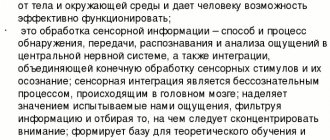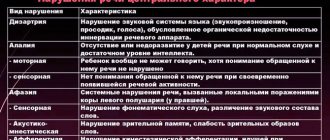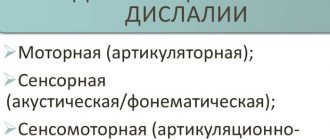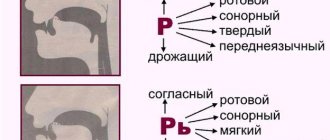- Certificate of Conformity in the Customs Union
- Certification in the Customs Union
- Certificate of conformity issued according to the Unified Form
- List of products subject to certification according to TR CU
- Certification schemes
- Set of documents for obtaining TR CU certificate
- TR CU certificate form
- Validity period of the TR CU certificate
- Mark of conformity of the Customs Union
- Get TR TS certificate
Certification in the Customs Union
The general list of products for which mandatory safety requirements are established on the territory of the union was approved by decision of the Customs Union Commission dated January 28, 2011 No. 526.
The degree of compliance with safety standards is checked during the mandatory certification process, after which a decision is made to issue a certificate of the Unified Customs Union.
| Certificate of compliance with the technical regulations of the Customs Union is a document that provides confirmation of product compliance with the requirements of the Customs Union. The certificate is valid throughout the EAEU. | Order service |
A Customs Union certificate is issued only after passing mandatory product certification within the framework of the requirements of the technical regulations of the Customs Union. Obtaining a voluntary certificate of the Customs Union is not provided.
Certification according to technical regulations
Having dealt with the choice of technical regulations of the Customs Union, the validity of documents confirming compliance and the search for exact requirements, you can proceed to the decisive step - contacting a certification center. Responsible Specialists will talk about the procedure in general and its features, organize tests in laboratories and issue certificates. It is important that the list of CU TR in the accreditation certificate matches the type of your product.
will help you prepare documents on favorable terms . Conformity assessment in the Customs Union is carried out according to all rules by experienced experts, and tests are carried out in accredited laboratories. We are waiting for free consultations by phone +375 29 630 52 83. We deliver certificates and declarations in Belarus and other countries of the Customs Union.
Certificate of conformity issued according to the Unified Form
In practice, this type of certificate is practically not used.
Before the entry into force of the technical regulations of the Customs Union, this document was issued for products that had passed mandatory certification according to the requirements of a member country of the Customs Union, provided that such products were included in the unified list of goods subject to mandatory conformity assessment within the Customs Union with the issuance of uniform documents, which was approved by decision of the Customs Union Commission dated April 7, 2011 No. 620.
After the technical regulations of the Customs Union came into force, it became impossible to obtain a certificate of conformity valid throughout the union without confirming compliance with the requirements of these regulations. Products for which the Customs Union regulations have come into force are excluded from the list.
List of products subject to certification according to the Technical Regulations of the Customs Union (TR CU)
There is no single large list of products subject to mandatory certification in the Customs Union. There are many lists of individual types of products, which, as a rule, are adopted by a decision of the Board of the Eurasian Economic Commission.
Some technical regulations provide a list of products as an appendix, while others do not list them at all; instead, certain parameters are indicated that help determine mandatory certification (for example, in technical regulations for equipment for working in explosive atmospheres and equipment operating under excess pressure).
At the moment, most of the technical regulations of the Customs Union have already entered into force, therefore, the mandatory requirements for various product groups are established in such documents.
In 2012, the following technical regulations of the Customs Union came into force for the following types of products:
- packaging (TR TS 005/2011) - from July 1, 2012;
- perfumery and cosmetic products (TR CU 009/2011) – from July 1, 2012;
- pyrotechnic products (TR TS 006/2011) - from February 15, 2012;
- personal protective equipment (TR TS 019/2011) - from June 1, 2012;
- products intended for children and adolescents (TR TS 007/2011) - from July 1, 2012;
- toys (TR TS 008/2011) - from July 1, 2012;
- automobile and aviation gasoline, fuel (TR TS 013/2011) – from December 31, 2012;
- light industry products (TR TS 017/2011) - from July 1, 2012
In 2013, specialized technical regulations in the field of mechanical engineering came into force. On February 15, 2013, regulations came into force for a large number of technical equipment, namely technical safety regulations:
- machinery and equipment (TR TS 010/2011);
- elevators (TR TS 011/2011);
- equipment for work in explosive environments (TR TS 012/2011);
- devices operating on gaseous fuel (TR TS 016/2011);
- low-voltage equipment (TR TS 004/2011);
- electromagnetic compatibility of technical equipment (TR TS 020/2011).
On July 1, 2013, the regulations for grain TR CU 015/2011, food products TR CU 021/2011, TR CU 022/2011, TR CU 027/2012, for juice products TR CU 023/2011, fat and oil products TR came into force TS 024/2011, On February 1, 2014, the technical regulations of the Customs Union came into force for the following product groups:
- small vessels (TR TS 026/2012);
- equipment operating under excess pressure (TR TS 032/2013).
On March 1, 2014, the technical regulations of the Customs Union (TR CU 030/2012) on the requirements for lubricants, oils and special liquids came into force.
On May 1, 2014, the technical regulations of the Customs Union on the safety of milk and dairy products (TR CU 033/2013) and on the safety of meat and meat products (TR CU 034/2013) came into force.
On July 1, 2014, the technical regulations of the Customs Union came into force for:
- furniture (TR TS 025/2012);
- explosives and products based on them (TR TS 028/2012).
On August 2, 2014, three technical regulations of the Customs Union in the field of railway transport came into force: TR CU 001/2011, TR CU 002/2011 and TR CU 003/2011.
In 2015, technical regulations of the Customs Union on the safety of highways TR CU 014/2011, wheeled vehicles TR CU 018/2011, agricultural and forestry tractors and trailers TR CU 031/2012 came into force.
On May 15, 2021, the technical regulation for tobacco products TR CU 035/2014 came into force.
On September 1, 2021, technical regulations for fish and fishery products TR EAEU 040/2016 came into force.
Since 2021, technical regulations on the requirements for liquefied hydrocarbon gases TR EAEU 036/2016, regulations on the use of hazardous substances in electrical engineering TR EAEU 037/2016 and regulations on the safety of attractions TR EAEU 038/2016 and equipment for playgrounds TR EAEU 042/ have come into force. 2017.
In 2021, two technical regulations for packaged drinking water TR EAEU 044/2016 and a regulation on oil safety TR EAEU 045/2017 came into force.
The texts of all the listed documents can be found on our website in the Technical Regulations section.
For your convenience, we have collected all the lists of products subject to certification according to the requirements of the CU TR on a separate page.
How will the sound pronunciation of dr tr help in automating the sound R?
Automation of the sound “r” begins by working on the combination of consonants “dr” and “tr”. First, the speech therapist asks the child to pronounce the sound being practiced in the syllables “dra” / “dro” / “dru”, “tra” / “tro” / “tru”. After numerous repetitions, it becomes easier for the child to pronounce the sound “r”.
After which the speech therapist asks the child to pronounce syllables without the initial consonant: “ra” / “ro” / “ru”. Then the “r” is practiced by numerous repetitions of the reverse syllables: “ar” / “or” / “ur”, until vibration appears during pronunciation.
After practicing the sound in syllables, work with words begins. But you need to move on to this stage only if the sound “r” in the syllables is pronounced accurately.
Automation of “r” in words begins with lexemes that begin with a problematic sound or with a combination of consonants “tr” (grass, hand, shirt). Then work begins on words with “r” in the middle of the word and at the end.
At the same time, work is underway to distinguish between the sounds “r” and “r`”. When pronouncing the latter, the tongue is pressed more tightly to the palate and is closer to the teeth.
In most cases, the child independently distinguishes between “r” and “r`” and changes the sounds himself. Sometimes you need to say that, for example, to soften the tongue you need to move the tongue closer to the teeth.
It is in this order that the sound “r” is automated.
The duration of automation directly depends on the type of phoneme. Whistling sounds become established most quickly. Work on automating hissing takes a little longer. The sound "r" is the most difficult. That is why it takes longer to automate than all other phonemes.
Working on consolidating sounds requires not only time, but also patience, persistence and regularity. Every day you need to pronounce words and phrases so that correct pronunciation becomes a habit.
Without regular training, results will not be achieved. But they should take place without pressure from an adult in a friendly environment.
Absolutely identical sets of syllables, words and phrases are floating around the Internet to automate a given sound in speech.
Why exactly “r” causes difficulties? Yes, because to produce this sound correctly it is necessary to make an effort; the muscles of the tongue must be strong and elastic.
If we pronounce other sounds with a light and free exhalation, only some sounds require minimal effort, then here the tongue should work “great”.
The placement of the sound “r” should begin with syllables in which it would not occupy the first position, so that the entire blow first goes to other sounds that are easy to pronounce and do not require muscle tension.
Therefore, it is most often proposed to use “tr” and “dr” in their various combinations with vowels. These are options such as “tra-dra”, “tro-dro”, “tru-dru”, “three-dra”.
I will also give a few phrases that will help you practice the sound “r” by automating it in these syllables.
Certification schemes in the Customs Union
Certification schemes are established in the Decision of the Customs Union Commission dated April 7, 2011 No. 621 “On the procedure for applying standard conformity assessment (confirmation) schemes in the technical regulations of the Customs Union”:
| Circuit designation | Application | Tests (research) | Production assessment | Inspection control |
| 1s | For product series | Standard samples | Production status analysis | Testing of certified samples / analysis of production status |
| 2s | For product series | Standard samples | Availability of QMS certificate | Testing of certified samples / QMS control |
| 3s | For batch of products | Samples from the batch | — | — |
| 4s | For a single product | Units of production | — | — |
| 5s | For a series of products, if it is not possible to test the finished product | Project documentation | Production status analysis | Testing of certified samples / analysis of production status |
| 6s | For a series of products, if it is not possible to test the finished product | Project documentation | Availability of QMS certificate | Testing of certified samples / QMS control |
| 7s | For complex series production products or when planning a large number of modifications | Like | Production status analysis | Testing of certified samples / analysis of production status |
| 8s | For complex series production products or when planning a large number of modifications | Like | Availability of QMS certificate | Testing of certified samples / QMS control |
| 9s | For a small batch of foreign-made products or complex products intended to equip enterprises of the Customs Union | Technical documentation | — | — |
How to use them
TR CU is a guide for the applicant with descriptions of what he needs to do, in what cases certification or declaration must be carried out, as well as how and where to solve all the tasks. Technical regulations describe the basic requirements for products in terms of their safety and quality, but often these are not all the conditions and parameters. After all, products in the same category may differ significantly in design, content, and degree of contact with humans or the environment. Security requirements depend on this, so you need to adhere to the following scheme:
Despite the fact that the technical regulations provide a lot of information for the applicant, the bulk of the work is carried out by accredited bodies. These certification centers are also guided by schemes, rules and requirements, and in addition to other documents from the conformity assessment system. The main thing in the process is to choose a suitable accredited body with testing laboratories, extensive experience and a positive reputation.
Set of documents for obtaining TR CU certificate
To obtain a certificate of conformity for a product, you must provide a set of documents.
The set of documents provided for certification varies depending on the compliance with which Technical Regulations the certification is carried out, and on what scheme is used.
Technical regulations take into account the specifics of products not only in terms of their technical and consumer characteristics, but also from the point of view of the objectivity of safety control. That is why in each specific case the composition of the package of documents for obtaining a TR CU certificate may vary.
We have a convenient service for viewing the dependence of the provided documents on the technical regulations and certification scheme. To do this, you need to go to the Certification and Declaration Schemes section and select the appropriate CU TR for your product.
When to use TR TS.
The technical regulations of the standardization system of the Customs Union are valid on the territory of all its countries. That is, manufacturers, importers or their authorized persons must comply with the requirements established by these documents in relation to their products. However, not all goods are subject to certification , but only those that are subject to one or several technical regulations . From all of the above it follows that they apply in the following cases:
- for distribution of products in the countries of the union;
- import and export of goods to the same countries.
Most often, the requirements of technical regulations, and there are more than 43 items in total, do not affect used products, those imported for testing, exhibition and advertising samples, or for personal use. Separate conditions are stipulated in each technical regulation, as, for example, in TR CU 018/2011 for wheeled vehicles, where cars of diplomatic or consular governments are considered exceptions.
And yet, products that may be dangerous to humans or the environment must be treated accordingly. The manufacturer and other persons in contact with the goods are required to comply with the rules established by the technical regulations of the Customs Union. Violation of legislation in the field of confirmation of compliance (lack of necessary documents, their falsification or invalidity, etc.) at best threatens with a serious fine . The entrepreneur will lose an amount equivalent to 100% of the products sold or up to 500 basic units.
Therefore, it is easier and more profitable to obtain a certificate of conformity for products and forget about fines, product downtime, and regulations from supervisory authorities for a long time. The maximum validity period of such a document is up to 5 years, depending on the type of product, the form of its release and the conformity assessment scheme. Similarly with the declaration, the receipt of which may also be provided for by technical regulations according to the type of product and the choice of conformity assessment scheme. Typically, the rules allow the issuance of a certificate for a shorter period.
TR CU certificate form
Unified forms of certificates, as well as declarations of the Customs Union, were approved by decision of the Board of the Eurasian Economic Commission on December 25, 2012 No. 293.
All fields of the certificate must be completed. Forms must be filled out in Russian without abbreviations or corrections. The Latin alphabet can be used to indicate information about the manufacturer of the product (including location) and about the product (for example, brand, model, article number, etc.). You can fill out the reverse side of the certificate in the language of the member states of the Customs Union.
The certificate may have attachments, drawn up on a standard form, into which information is transferred (if there is a significant amount of it):
- about products;
- about documents confirming compliance;
- HS codes;
- conditions and periods of product storage, service life (shelf life) and other information identifying the product.
At the same time, each sheet of the application is numbered, signed by the head and expert of the certification body, and accompanied by the seal of the body.
Validity period of the TR CU certificate
The TR CU certificate for mass production of products is valid for no more than 5 years. A certificate for a batch or a single product is valid for the entire service life of this product.
| Certificates of conformity and other technical documentation for products must be kept by the manufacturer (a person authorized by the manufacturer) for at least 10 years from the date of discontinuation of these products or from the date of sale of the last product from the batch. | Order service |
Mark of conformity of the Customs Union
Products that have been certified in accordance with one or more technical regulations of the Customs Union must be marked with a sign of product compliance with the technical regulations of the Customs Union.
The image of the sign was approved by the Decision of the Customs Union Commission dated July 15, 2011 No. 711 “On a single mark for the circulation of products on the market of the member states of the Customs Union.”
The abbreviation EAC sign encodes the term Eurasian Conformity - Eurasian Conformity.
The right to be marked with this mark is granted only to products that have passed all conformity assessment procedures established by the technical regulations.
The size of the sign when marking products with it should not be less than 5 mm. The image should be one color and contrast with the color of the surface or background.
Labeling of products with the EAC mark indicates that the product has passed certification and all the necessary laboratory tests, confirming compliance with the requirements of the technical regulations of the Eurasian Economic Union.










